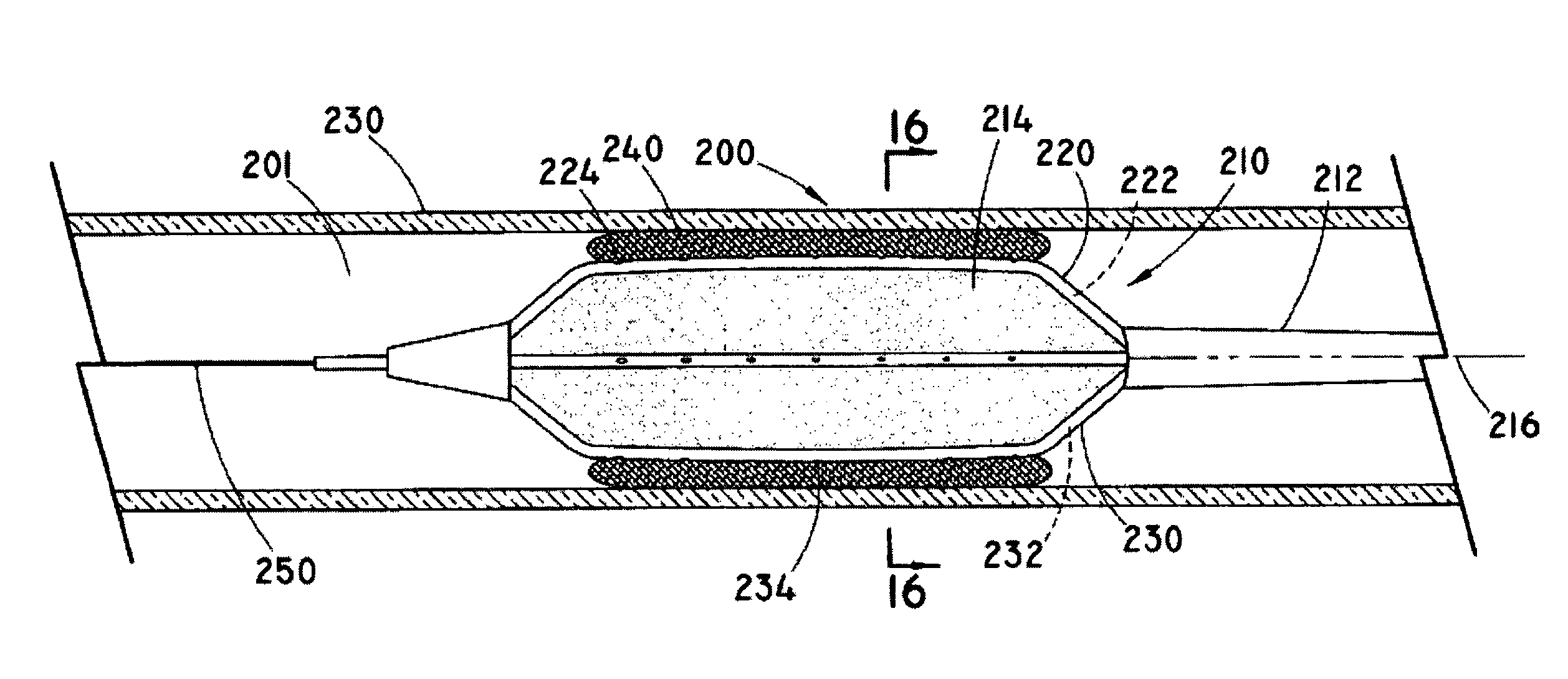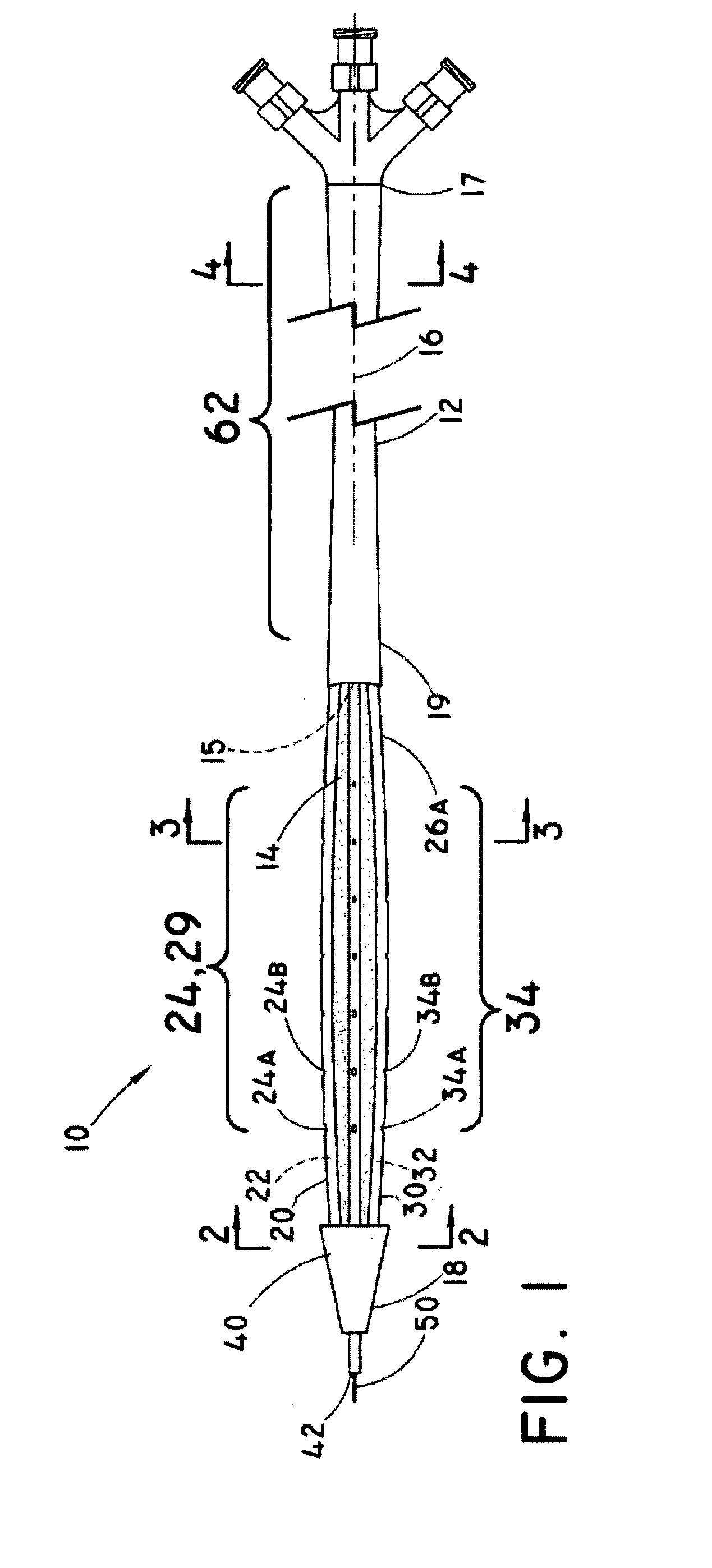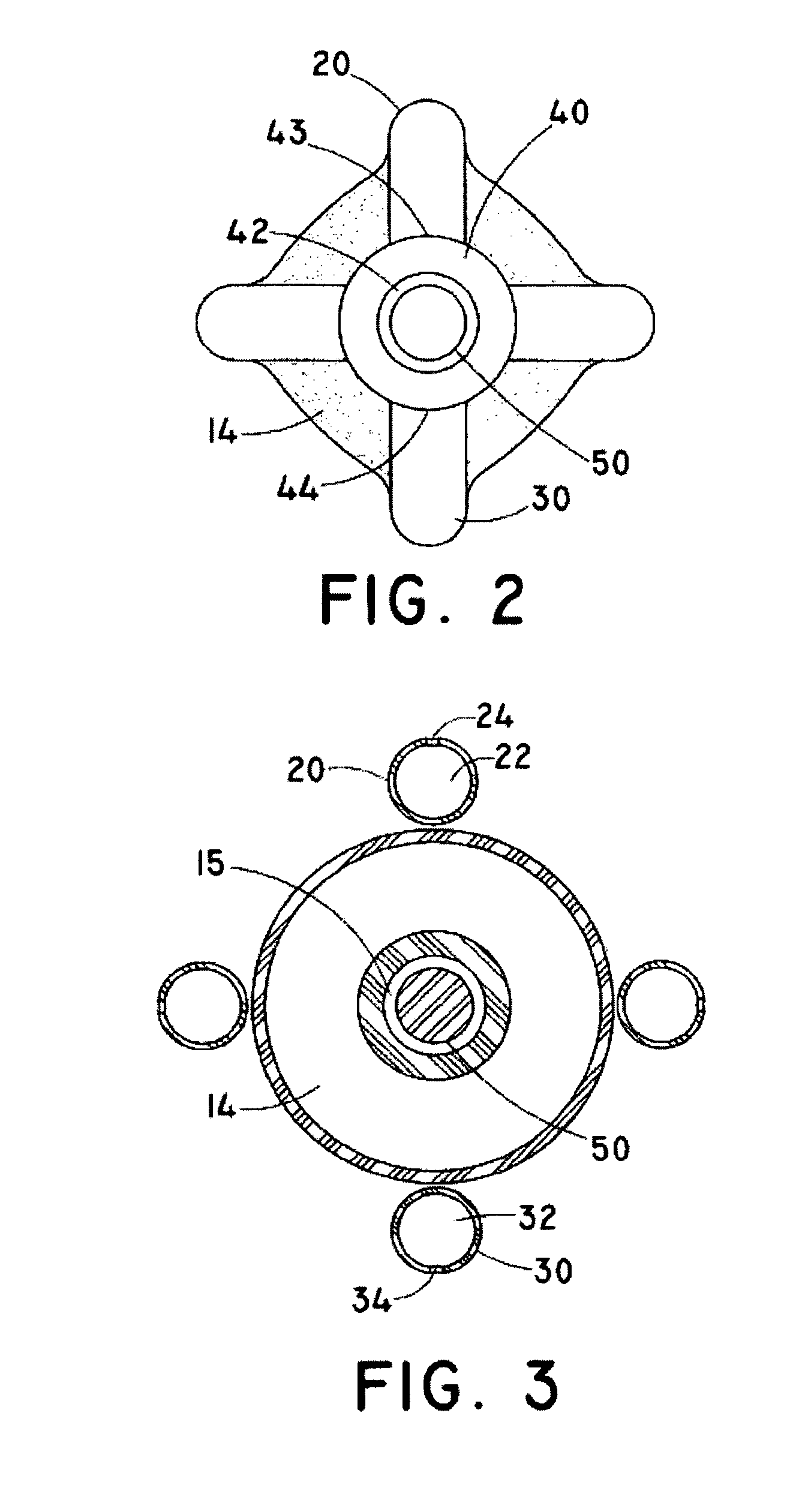Therapeutic agent delivery system
a delivery system and therapeutic agent technology, applied in the field of medical devices, can solve the problems of excessive amount, unsatisfactory, and multiple catheter balloons that may require undetected inflation time and/or dwell time of the catheter, and achieve the effect of increasing the pressure of the expandable portion of the catheter sha
- Summary
- Abstract
- Description
- Claims
- Application Information
AI Technical Summary
Benefits of technology
Problems solved by technology
Method used
Image
Examples
Embodiment Construction
[0037]As used herein, the term “implantable” refers to an ability of a medical device to be positioned at a location within a body, such as within a body vessel. Furthermore, the terms “implantation” and “implanted” refer to the positioning of a medical device at a location within a body, such as within a body vessel.
[0038]The term “biocompatible” refers to a material that is substantially non-toxic in the in vivo environment of its intended use, and that is not substantially rejected by the patient's physiological system (i.e., is non-antigenic). This can be gauged by the ability of a material to pass the biocompatibility tests set forth in International Standards Organization (ISO) Standard No. 10993 and / or the U.S. Pharmacopeia (USP) 23 and / or the U.S. Food and Drug Administration (FDA) blue book memorandum No. G95-1, entitled “Use of International Standard ISO-10993, Biological Evaluation of Medical Devices Part-1: Evaluation and Testing.” Typically, these tests measure a materi...
PUM
 Login to View More
Login to View More Abstract
Description
Claims
Application Information
 Login to View More
Login to View More - R&D
- Intellectual Property
- Life Sciences
- Materials
- Tech Scout
- Unparalleled Data Quality
- Higher Quality Content
- 60% Fewer Hallucinations
Browse by: Latest US Patents, China's latest patents, Technical Efficacy Thesaurus, Application Domain, Technology Topic, Popular Technical Reports.
© 2025 PatSnap. All rights reserved.Legal|Privacy policy|Modern Slavery Act Transparency Statement|Sitemap|About US| Contact US: help@patsnap.com



